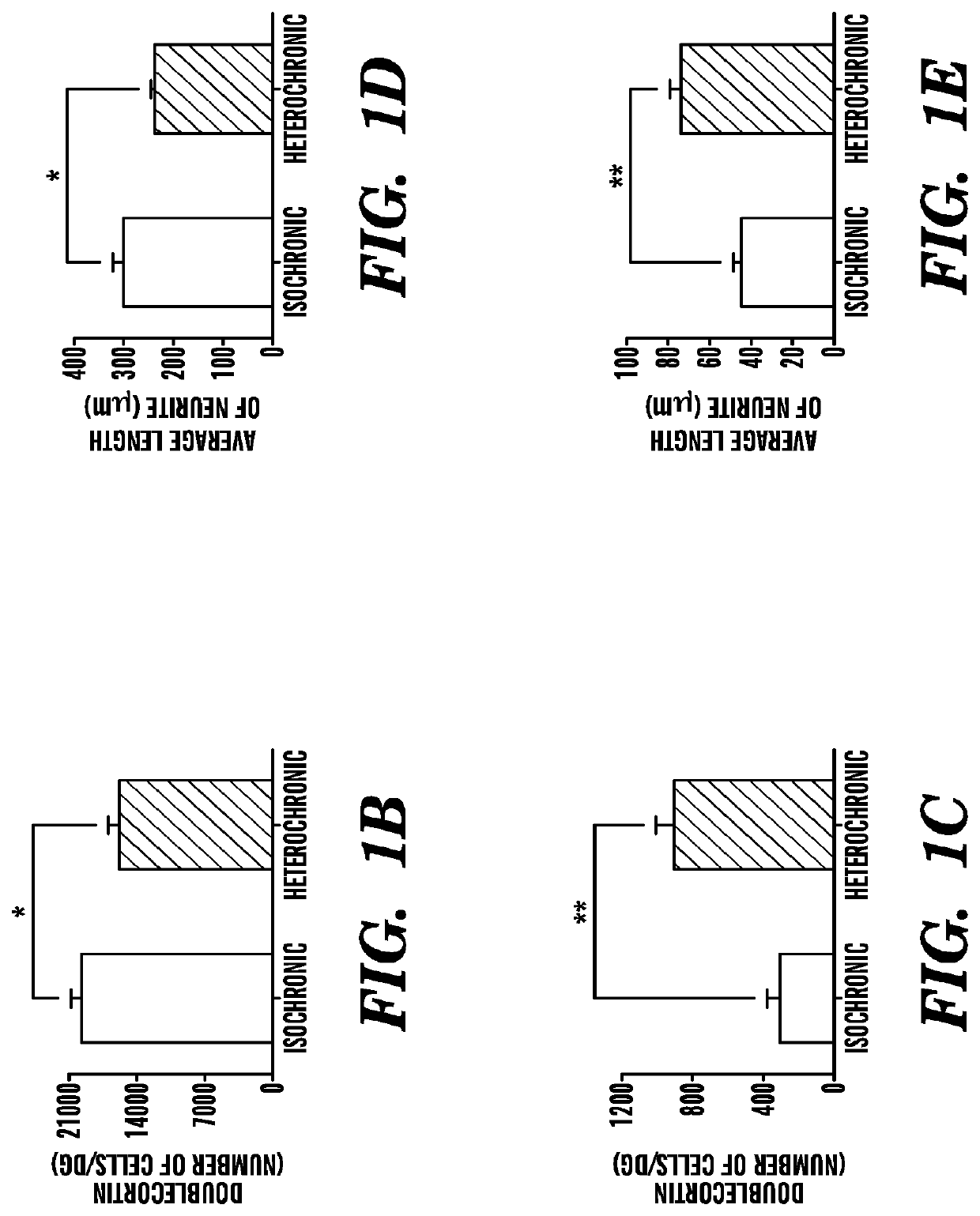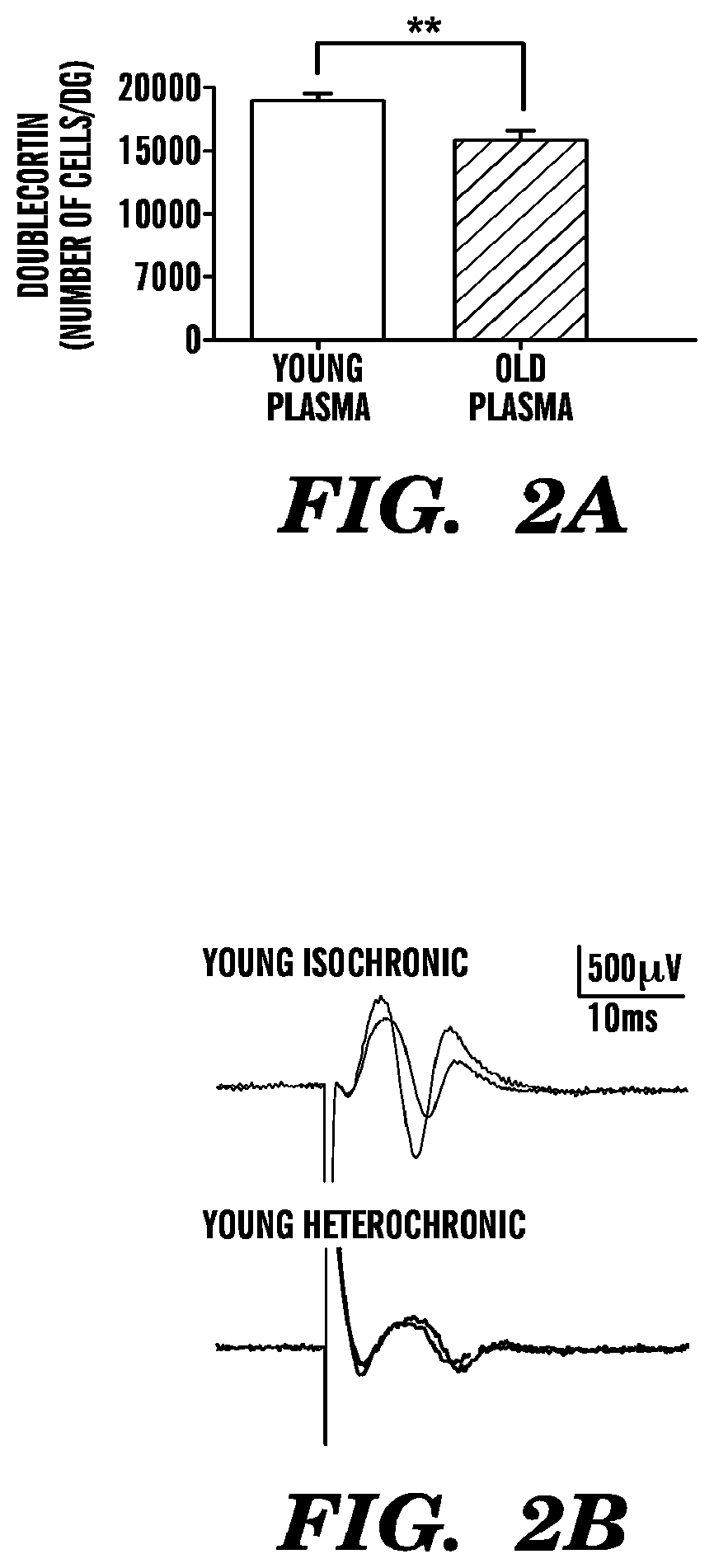Ccr3 modulation in the treatment of aging-associated impairments, and compositions for practicing the same
a technology of aging-associated impairment and modulation, which is applied in the direction of peptides, peptides/protein ingredients, transferases, etc., can solve the problems of loss of synaptic function, loss of neuronal function, and the vulnerability of aging brain neurons to sub-lethal effects
- Summary
- Abstract
- Description
- Claims
- Application Information
AI Technical Summary
Benefits of technology
Problems solved by technology
Method used
Image
Examples
Embodiment Construction
ided. Aspects of the methods include modulating CCR3, e.g., via modulating eotaxin-1 / CCR3 interaction, in the mammal in a manner sufficient to treat the mammal for the aging-associated impairment. A variety of aging-associated impairments may be treated by practice of the methods, which impairments include cognitive impairments.
[0022]Before the present methods and compositions are described, it is to be understood that this invention is not limited to a particular method or composition described, as such may, of course, vary. It is also to be understood that the terminology used herein is for the purpose of describing particular embodiments only, and is not intended to be limiting, since the scope of the present invention will be limited only by the appended claims.
[0023]Where a range of values is provided, it is understood that each intervening value, to the tenth of the unit of the lower limit unless the context clearly dictates otherwise, between the upper and lower limits of tha...
PUM
| Property | Measurement | Unit |
|---|---|---|
| dissociation constant | aaaaa | aaaaa |
| dissociation constant | aaaaa | aaaaa |
| dissociation constant | aaaaa | aaaaa |
Abstract
Description
Claims
Application Information
 Login to View More
Login to View More - R&D
- Intellectual Property
- Life Sciences
- Materials
- Tech Scout
- Unparalleled Data Quality
- Higher Quality Content
- 60% Fewer Hallucinations
Browse by: Latest US Patents, China's latest patents, Technical Efficacy Thesaurus, Application Domain, Technology Topic, Popular Technical Reports.
© 2025 PatSnap. All rights reserved.Legal|Privacy policy|Modern Slavery Act Transparency Statement|Sitemap|About US| Contact US: help@patsnap.com



